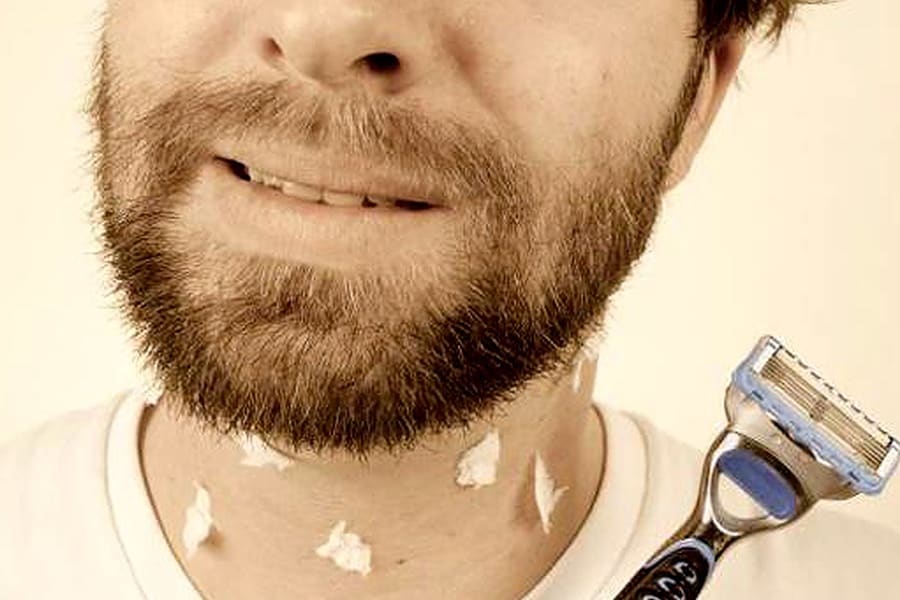
Men’s Essential Shaving Guide
Shaving can be considered a rite of passage, but for many of us, no one taught us how to shave. We learned by taking a razor to our faces and figuring it out along the way. Or we learned by watching our dads, friends or barber. But if you’re constantly dealing with ingrown hairs, irritated skin and stubborn stubble then there might be room to improve your technique.
Here are four simple steps to shaving, including great tips on shaving products and taking care of your razor.
Step 1: Prep
Wash your face with warm water and a gentle cleanser which will soften the hair and reduce the force needed when shaving. Use a facial scrub to remove the top layer of any dead, flaky skin that might be trapping hairs and clogging your blade. Some scrubs also soften your hair by conditioning them which makes them easier to cut; this is particularly useful for men with coarse facial hair.
Step 2: Lubricate
Lubricate the areas that you will shave with shaving cream, shaving soap or pre-shave oil. This enables the razor to glide with less friction, preventing (dreaded!) razor burn. Oil-based shaving products like shaving creams and pre-shave oils will give you the best glide.
Pre-shave oils are great for shaving the lines of your beard. Since it doesn’t foam, it allows you to see the area that you’re shaving (definitely helpful!). Pre-shave oils are also recommended if you experience razor burn since it can be used underneath your shaving gel or cream, which provides a double-layer of glide.
Shaving soaps are also a great choice. Shaving soaps come in a hard-pressed bar or stick and can be made from various ingredients. We recommend formulas with a glycerin or coconut oil base because they’re very moisturizing for your hair and skin. To use a shaving soap, you need a brush to lather the product. The brush not only provides lather but also helps to lift your beard hairs, standing them at attention and ready to be cut.
Gels are water-based and provide the least amount of glide in comparison to other products. However, they’re still better than using only water — which you should never do!
Step 3: Shave
Despite your inclination, you should shave in the direction of hair growth. For a closer shave, your next stroke can be at a diagonal angle. If you need to repeat that area, slide your razor at a different diagonal angle.
Keep swiping in a different diagonal angle; don’t swipe back and forth. The purpose of crisscrossing like this is so every time you swipe, you cut the hair into a needle tip point. This will help the hair, when it regrows, to pierce through any potential layer(s) of dead skin, minimizing the chances for ingrown hairs. Be sure to lather up again between each swipe of the blade to prevent razor burn.
Shaver Tips:
- Rinse your razor blades often to remove any hair, skin or shaving product build-up.
- Make sure you’re using a sharp razor. Dirty, old, worn-out razors increase the risk for nicks, cuts, and irritation.
- If your razor is still in good condition, then light, smooth strokes should be sufficient; you shouldn’t have to force your strokes or apply a lot of pressure. If this doesn’t seem to be the case for your razor, it might be time for you to replace your blades with new ones.
Store your blade in a dry area to help extend its lifespan. Razor companies generally recommend that blades are to be used for 4-10 shaves. Once you start to feeling some drag when you shave, or if it becomes difficult to cut through hair, it’s time to change the blade.
Step 4: Post-Shave
Shaving irritates your skin so it’s important to hydrate and soothe your skin once you’ve finished. Apply your regular facial moisturizer to the shaved area and the rest of your face. If you don’t have a post-shave product, we recommend aloe vera gel which is a great plant-based, post-shave solution.
When we think of after-shave, we might think of Macaulay Culkin in Home Alone slapping his face with after-shave, clearly causing discomfort. That classic style of alcohol-based after-shave is no longer needed today (thank goodness!). These types of after-shaves dehydrate your skin and may damage your skin’s barrier function if used daily.
Historically, after-shaves were popular in the Victorian era to disinfect any cuts or nicks that can be caused by shaving. Sanitation standards then were not as high as today’s and infections were much more common. Also, shaving tools and techniques were not as tailored as they are now to maximize comfort and safety.
Luckily we’ve come a long way and the entire shaving process has been refined and perfected so you can shave and take care of your skin worry- free. If you have any further questions, book a consultation with us or send us your question by email. We’re here to help!
